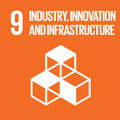- Docente: Cristiano Cuppini
- Credits: 9
- SSD: ING-INF/06
- Language: Italian
- Moduli: Cristiano Cuppini (Modulo 1) Stefano Diciotti (Modulo 2)
- Teaching Mode: In-person learning (entirely or partially) (Modulo 1); In-person learning (entirely or partially) (Modulo 2)
- Campus: Cesena
- Corso: First cycle degree programme (L) in Biomedical Engineering (cod. 9082)
Learning outcomes
The lessons illustrate the working principle, the functional architecture and the technical features of instrumentations and devices for diagnostic use. Students will acquire the following skills: - assess the performances of a biomedical device and evaluate its costs/benefits; - define the functional and technical specifications of a device; - execute a outline plan of a device; - realize a virtual instrumentation prototype and its user interface; - carry out electrical safety tests of a biomedical device. At the end of the classes, the students will be able to look up and interpret technical papers and national/international standards of biomedical devices; the students will be able to bring themselves up to date on the methodologies, techniques and instrumentation within the field of biomedical engineering.
Course contents
Part I
Medical devices: definition and classification. Functional architecture of biomedical instrumentations. Methods for dealing with errors and noise during the measurement of biological signals. Assessment of static and dynamic performances of a system for biomedical measurements.
Part II
Resistive and capacitive sensors and their use in the biomedical instrumentation. Temperature measurements. Detection electronic circuits. Electrochemical potential and electrochemical sensors. Electrodes for superficial and cellular biopotential measurements. Electrode impedance. Measuring and monitoring arterial blood pressure.
Part III
Operational amplifier. Inverting, non-inverting, buffer and differential amplifiers. Common mode rejection ratio (CMRR). Input and output impedance of inverting and non-inverting amplifier. Biomedical instrumentation preamplifier: functional specifications and circuit. CMRR and input resistances of the instrumentation preamplifier. Frequency response. Diagram of analogical filters. Measurement of biopotentials. Analysis of the electroencephalograph circuits.
Part IV
Virtual instrumentation. Medical devices standards and European Directives. Failure and risk analysis. Electrical safety and reliability of biomedical instrumentations.
Part V
Diagnostic Imaging systems. Physical principles and technological features of the following diagnostic systems: projective x-ray, computed tomography, ecography, magnetic resonance imaging, positron emission tomography.
Laboratory experiences
Temperature measurement via thermocouple.
Strain measurement via strain-gage transducers.
Design and realization of a digital thermometer.
Design and realization of a biomedical instrumentation preamplifier.
Readings/Bibliography
G. Avanzolini, E. Magosso, Strumentazione biomedica: progetto e impiego dei sistemi di misura, Patron Editore, Bologna, 2015.
J.G. Webster, Medical Instrumentation. Application and Design, John Wiley & Sons, 1998
E. O. Doebelin, Measurement Systems - Application and Design, McGraw-Hill, 2003
Bioimmagini. Giuseppe Coppini, Stefano Diciotti, Guido Valli. Pàtron Editore, III Edizione, 2013
Teaching methods
The course will consist in classroom lessons, during which the teacher will explain the single subjects, and will develop exercises to help students to familiarize with circuit analysis and design, and to prepare them for the final examination. Laboratory experiences (mandatory for the students) will be performed to allow practical contents to be practiced and acquired by the students.
Assessment methods
The students will be evaluated with a written examination, to test their abilities to analyze simple circuits and design an outline plan of a biomedical measurement system, and an oral examination during which students' ability to expose the course subjects organically, concisely and with property of language will be verified.
Teaching tools
Blackboard, notebook, projector, lecture notes, Biomedical Engineering Laboratory
Office hours
See the website of Cristiano Cuppini
See the website of Stefano Diciotti
SDGs


This teaching activity contributes to the achievement of the Sustainable Development Goals of the UN 2030 Agenda.
